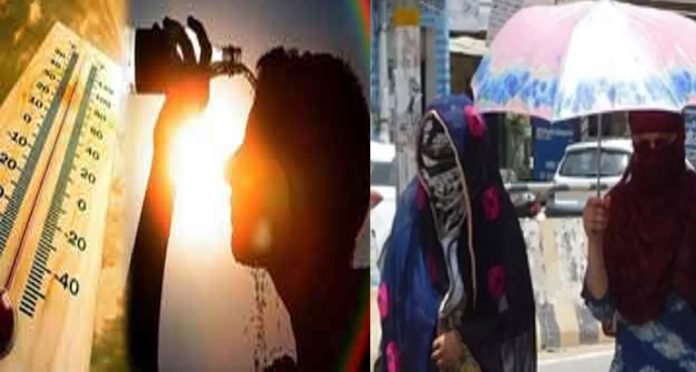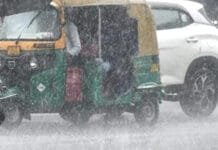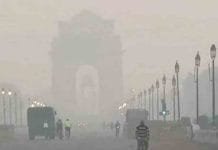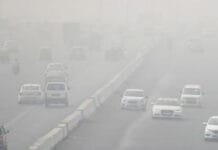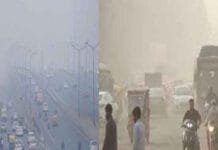Heat Wave Grips North India : In mid-June, India experiences starkly contrasting weather patterns, ranging from scorching heat waves to the eagerly anticipated onset of pre-monsoon showers. North India, including states like Delhi, Uttar Pradesh, and Rajasthan, is currently battling extreme heat conditions, with temperatures soaring above 40 degrees Celsius. Cities such as Narela in Delhi have recorded blistering highs of 44 degrees Celsius, while Prayagraj in Uttar Pradesh sweltered at 46 degrees Celsius. The India Meteorological Department (IMD) has issued heat wave alerts for multiple states, cautioning residents about severe conditions expected on June 17.
IMD Forecast and Heat Wave Alerts
The latest forecasts from the IMD indicate a prolonged heat wave across parts of North India, encompassing Himachal Pradesh, Jammu division, Madhya Pradesh, and Chhattisgarh. Additionally, there is a heightened likelihood of a heat wave affecting regions in Jammu, Himachal Pradesh, West Bengal, and Bihar in the near future. The IMD underscores the critical need for residents to adopt precautionary measures against the prolonged heat, expected to persist until early next week.
Impact of Cyclone Remal on Monsoon Progress
The progression of the southwest monsoon has been notably delayed in several states, including Bihar, Andhra Pradesh, Chhattisgarh, Odisha, and West Bengal, primarily due to the influence of Cyclone Remal. Initially projected to arrive in Kanpur by June 29, the monsoon’s advancement has been hindered between West Bengal and Bihar. Consequently, Uttar Pradesh continues to experience intensified hot winds, exacerbating the ongoing heat wave conditions in the region.
Detailed Regional Weather Outlook
Uttar Pradesh: Continuing Heat Wave Conditions
In Uttar Pradesh, the Meteorological Department forecasts the persistence of hot winds across all districts until June 18. The delayed onset of the monsoon has further aggravated the situation, with temperatures soaring and minimal relief anticipated in the upcoming days. Eastern Uttar Pradesh, along with parts of Madhya Pradesh and western Uttar Pradesh, are likely to endure temperatures ranging from 44 to 46 degrees Celsius, intensifying the heat wave impact.
Rajasthan: Varied Weather Patterns
Meanwhile, Rajasthan has observed varied weather patterns characterized by intermittent cloud cover, occasional sunshine, and sporadic thunderstorms and drizzles across several districts. The Meteorological Department anticipates pre-monsoon showers in the coming days, offering potential relief from the prevailing heat and humidity. A yellow alert has been issued for 17 districts in Rajasthan, cautioning residents about thunderstorms and moderate rainfall accompanied by wind speeds of 30 to 40 kilometers per hour.
Conclusion: Navigating Contrasting Weather Phenomena
As India navigates through these contrasting weather phenomena, from severe heat waves gripping North India to the delayed onset of the eagerly awaited monsoon in certain regions, staying informed and prepared is paramount. Residents in affected areas are strongly advised to closely monitor updates from the IMD, take necessary precautions against heat-related illnesses, and prepare for potential thunderstorms and rainfall.
With the monsoon expected to gradually progress in the upcoming days, there is cautious optimism for relief from the scorching temperatures by the end of June. The fluctuating weather conditions underscore the importance of proactive weather monitoring and preparedness. By remaining vigilant about local forecasts and adhering to precautionary measures, individuals can effectively mitigate the impact of extreme weather events and ensure their safety and well-being amidst these dynamic weather patterns.
Stay Informed, Stay Prepared
In summary, the current weather dynamics in India highlight the critical significance of proactive weather monitoring and preparedness. By staying informed about local forecasts and diligently following precautionary measures, individuals can mitigate the impact of extreme weather events and prioritize their safety and well-being. As we progress through mid-June, let us remain vigilant and proactive in navigating these contrasting weather patterns across the nation.

